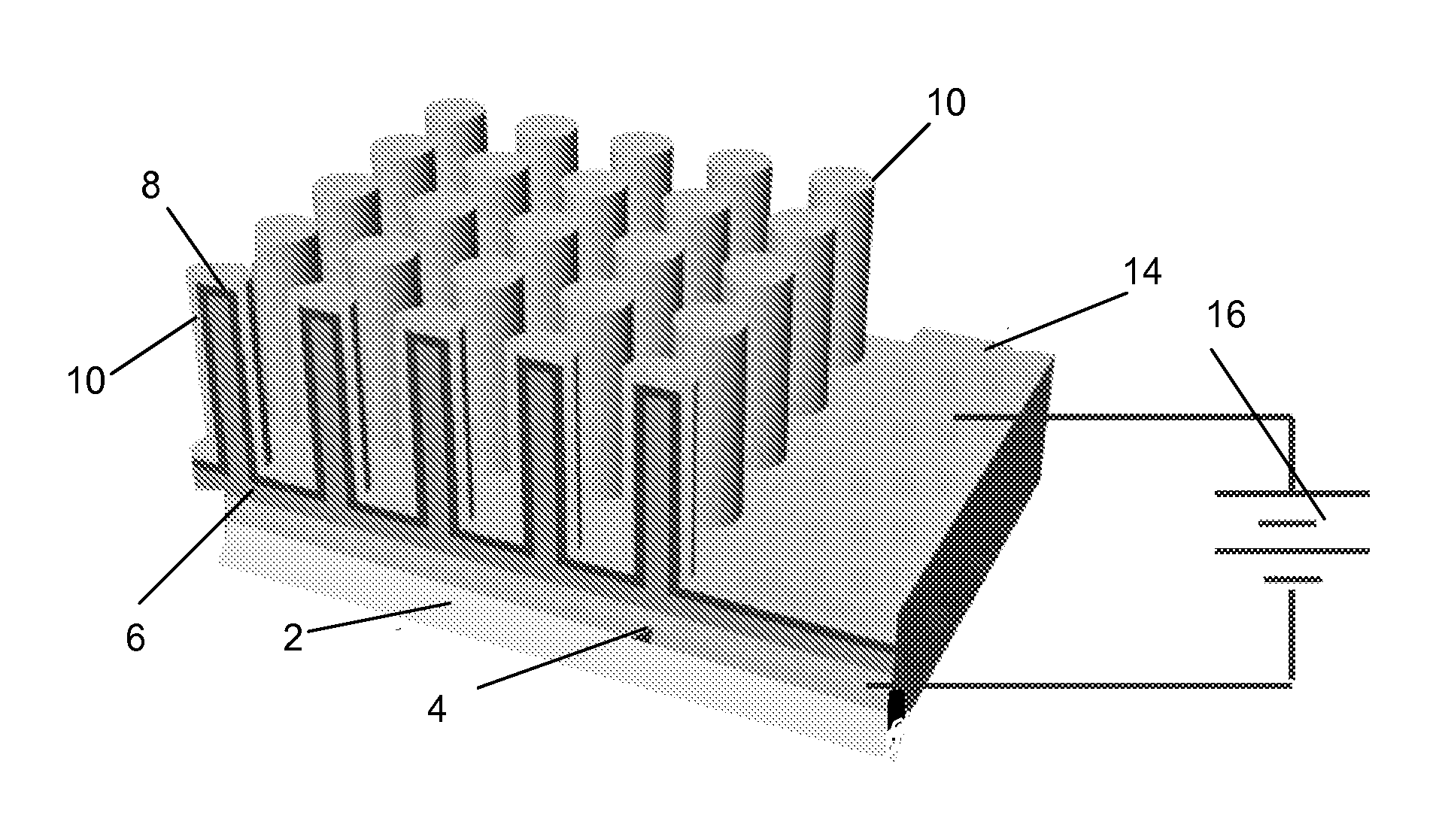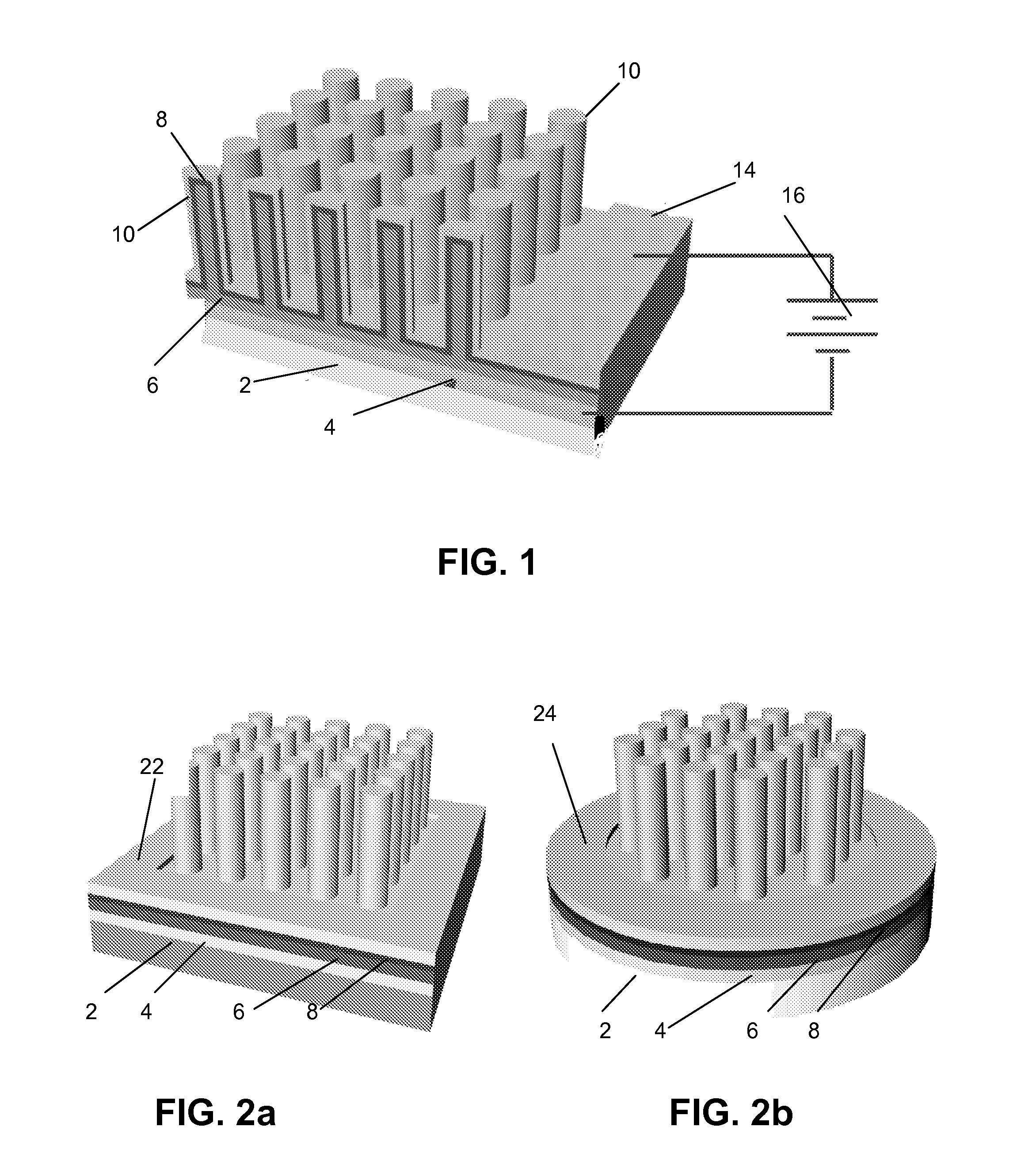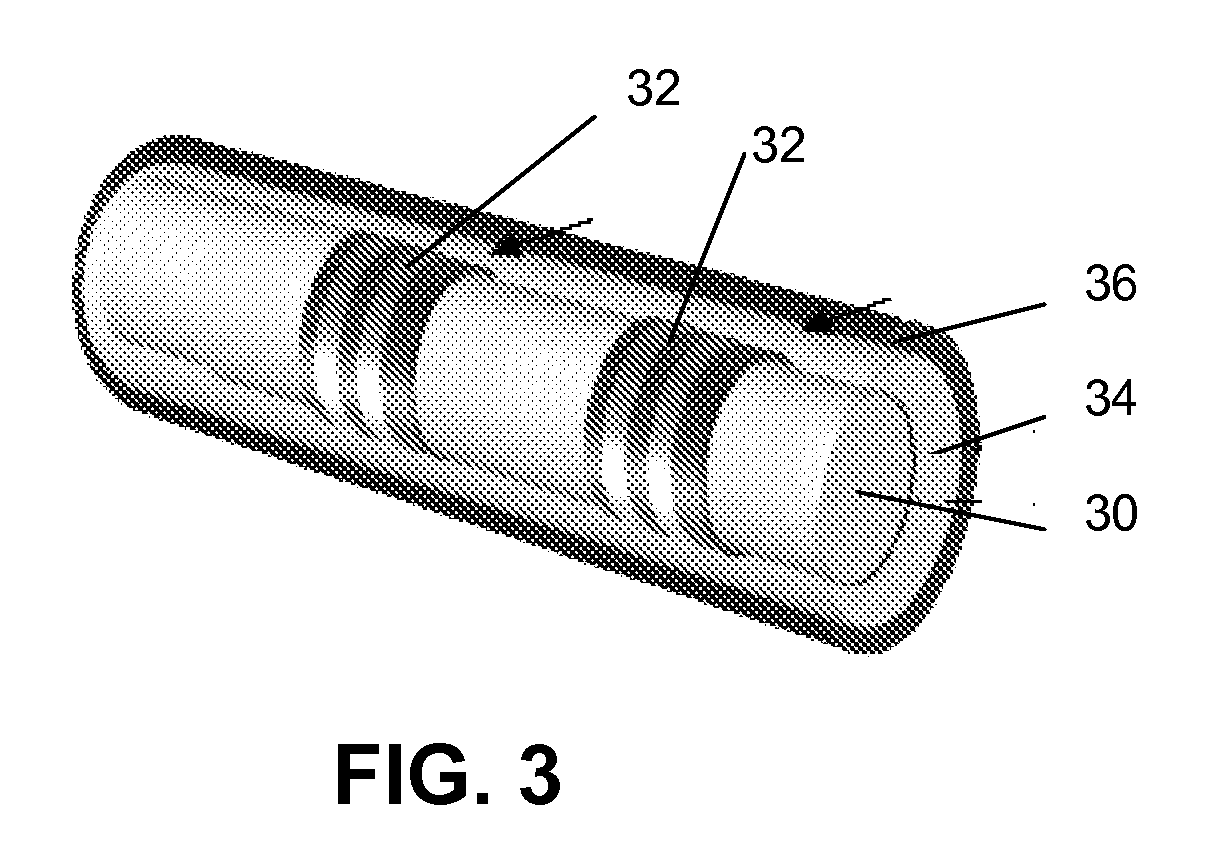Nanowire Array-Based Light Emitting Diodes and Lasers
a technology of light-emitting diodes and nanowires, applied in the direction of lasers, semiconductor lasers, material nanotechnology, etc., can solve the problems of limited directionality, inability to dim, slow starting, etc., and achieve low threshold injection lasers, low lasing threshold reduction, high efficiency
- Summary
- Abstract
- Description
- Claims
- Application Information
AI Technical Summary
Benefits of technology
Problems solved by technology
Method used
Image
Examples
Embodiment Construction
[0027]According to the present invention, semiconductor nanowire arrays are used to replace the conventional layer design for fabrication of LEDs and laser diodes. In one embodiment, core-shell nanowire arrays are formed on a conducting substrate using known nanowire growth techniques, including Chemical Vapor Deposition (CVD), Metal Organic Chemical Vapor Deposition (MOCVD), Molecular and Chemical Beam Epitaxy (CBE and MBE), solution syntheses, and template-assisted electrochemical syntheses. The conducting substrates can be ITO (indium tin oxide), FTO (fluorine-doped tin oxide), tin oxide, zinc oxide, degenerated doped Si, metals, or other similar materials. Where the growth technique is solution-based, the nanowires can also be formed on a metal coated substrates that can later serve as an electrode.
[0028]The nanowires can be formed from III-V or II-VI compound semiconductors, such as AlInGa, ZnO, and alloys thereof, such as AlxInyGa(1-x-y)PzAs(1-z), AlxInyGa(1-x-y)PzAs(1-z):N (d...
PUM
| Property | Measurement | Unit |
|---|---|---|
| Correlated Color Temperatures | aaaaa | aaaaa |
| Correlated Color Temperatures | aaaaa | aaaaa |
| diameters | aaaaa | aaaaa |
Abstract
Description
Claims
Application Information
 Login to View More
Login to View More - R&D
- Intellectual Property
- Life Sciences
- Materials
- Tech Scout
- Unparalleled Data Quality
- Higher Quality Content
- 60% Fewer Hallucinations
Browse by: Latest US Patents, China's latest patents, Technical Efficacy Thesaurus, Application Domain, Technology Topic, Popular Technical Reports.
© 2025 PatSnap. All rights reserved.Legal|Privacy policy|Modern Slavery Act Transparency Statement|Sitemap|About US| Contact US: help@patsnap.com



